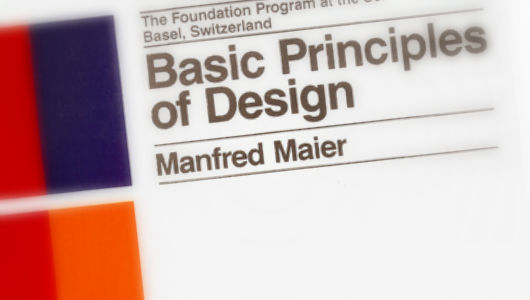
11 Self-taught Graphic Designer tips below may inspire you the beginner in the field of design and it also can be a start for the beginner learning. Although I am a graphic designer who has graduated college but basically the majority of the skills that I have today obtained by self-taught. Among them I got from the internet, video tutorials, and also from the books. I think this experience is worth writing.

Since the instructional design includes three things: science, arts and skills, then the design process will involve them. However, being a self-taught and find the first thing to do is to represent an uncertain, supposing the design is a square box you could have learned it from the left or the middle or even from the far end. Basically, all of which will direct you to what is called the design. Perhaps, what is produced, the process of learning, mindset, skills, imagination and the environment may result in different to create what is known as the design itself, but we have our own stage which makes different abilities even if we begin simultaneously.
In my opinion a designer is not merely a title given to those who are adept at using any graphics software. Design is not only about the software, nor a drawing. There are a series of creative processes contained therein. For me the graphic designer is also a 'problem solver', as they are required to always be creative. Moreover, some of the tips that I wrote is not a basic guide raw and bound, then maybe you will need a little creativity to develop these tips. Hopefully, these tips will inspire you (and me) to become better designers.
11 Tips for Self-taught Graphic Designer
1. Know your way of thinking

Or more precisely to identify who you are. We always work in the design of the scale is the dominant aesthetic. Aesthetics are included in the art that is controlled by the right brain. As I mentioned in an article entitled 'Design and the Creative Process' that reveals about how the left brain and right brain works, and so is the learning instructional design which is a design approach step to undergraduate education. To find out whether you are a left brain or right brain user dominant there is also a 'Left Brain Right Brain Personality Test' to find out.
Knowing that you are left or right brain dominant, you will be able to do something to respond to the results. As train your right brain, doing something imaginative and creative. Or even can determine your potential in this field. Similarly, you will discover how you learn.
Learning self-taught design will lead to the design a little more practical (learning that leads to the practice) that may make it difficult or take a long time to understand the design concept. Everyone has their way of learning, respectively. Some people may prefer to learn theory and then apply it. Others may skip directly to the theory and practice. Some may be easier to understand with a case study or observation of another design project.
Identify appropriate learning media for you. Do you feel more comfortable to learn through books, written tutorials, or maybe a video tutorial? Do you feel more comfortable with the discussion of the details or technical in nature, you may want to immediately put it into practice? To determine the best method of learning that you like will require some experimentation, trial and error and then evaluate the results. This step may take a long time, but once it controlled, your learning will be easier.
2. Learn the Graphic Design Principles and Instructional Design

Of course you must know about the Graphic Design Principles, many design enthusiast does not know about this but often use unconsciously. By knowing in advance the graphic design principles, it will help you to make the design work that is not only attractive but also useful and educative. Many would love design (those who say: "as long as seen interesting and well, so be it") will lose the meaning of their design, they may not be able to describe the deep meaning of what they make, and tend to be difficult to communicate with clients.
As a real example is if you have to know that feelings of pleasure can be obtained by using yellow color (color psychology), of course, to symbolize fun, then you're not necessarily coloring your design project with purple color which would just seem sad. Or also in visual communication, you can find out the use of blank space as a reference for a good and right design work (though in terms of design there are no standards for 'good and right', but this approach still required).
Almost in every level of basics learning there are approaches that can be used as a reference to do it right. Even though in the field of fine arts there are some basic learning. Maybe for those who are very talented in this field do not need this, but somehow the graphic design field still requires basic learning as recognized in the world of graphic design today. We can not just ignore it while others learn about it, at least you know it, you do not have to study them rooted and complex.
3. Determine your Design Field

Determining your design field will have much effect on what you will learn and what you will earn. For example, if you choose to be a logo designer, then you should not switch to another fields before you become a specialist in the field. Graphic design world is very wide, you can not learn all of them and proficient in all these areas. Now the world just need people who are very determinant in their field anyway. But don't worry, everyone is unique and special! By determining the design you would like to know its limitations. As with software, technology, design tools, facilities, cost, time, labor, language and so on.
There are various design disciplines with the requisite skills and specific skills in which nearly all of which can make money. I would not load it all in this article, but I will post some generally and be sure to check out this article: 5 Ways to Make Money Online As A Graphic Designer
- Advertising (graphic design for advertising)
- Software Design (design for user interface software)
- Web Design (UI design)
- Movie Production (movie title design, motion graphics)
- Animation (Animator Design, Character Design, Illustrator Design)
- Music Visualizer (Visual Jokey, Video Maker)
- Game Design (UI, character design, environment)
- Printing Industry (production management, packaging)
- Editorial Design (layout newspaper, magazine design)
- Book Design (design books)
- Information Design (map design, sign systems)
- Interactive Design (ATM application design, user interaction scenarios)
- Company branding (logo, identity, brand developer)
- Type Design (letter design, experimental typography) etc.
4. Learn Appropriate Design Software

Explore the use of design software classified into areas of skills and knowledge. Learn just software design potential and according to your desired design disciplines. It would be very awkward if you want to learn digital design while you do not master the software design which is based on digital. Software is a secondary design tools, the main tool for designers is their brain, however, the software does not mean anything without the aesthetic and creative ideas. 'Good design always made for good purpose'.
Often software instead just an obstacle to visualize our creative ideas. Suppose you want to create three-dimensional objects in AI, but you do not know how to make it, it would be a strategic constraint. Although we can find the answer, but still would hinder such a process during the design project (remember! deadline).
Software design is very diverse, then I would suggest to you know the type, name and function. Just know is enough, because it might be useful someday.
5. Learn from an expert

Largely self-taught does not mean you do not have the opportunity to ask questions. Try to learn from the best people in their field who can teach easily and clearly, probably not many people who can teach you but there is.
We recommend that you do not learn from a beginner. Limited knowledge may even drag you to the techniques that actually useless. You better learn directly from the experts who are experienced in their field.
Looking for answers from an expert is not as difficult as it sounds. On the internet, they will be in big sites. In the book, they can be found in leading publishers. Easy isn't it?
6. Ask Less, Google more!

You will realize that on the internet there are many good-hearted people to write free tutorials, free articles, provides free software, free books, and more. It was made possible because they can and want to, but this does not mean that you can not just tell them to always respond to what you ask. Get used to always find a solution to your own problems. That way you'll feel right at what you are trying to do.
If you find a problem when studying, start by searching the question on Google. It's easy, just write down the question. Suppose you do not know how to create a book in InDesign, then you just write it "Creating book files". I guarantee you will get a lot of links and alternative answers to almost every question. Happy googling! :)
7. Create or join communities

Good community always active, have activities, and dynamic. There are two types of communities, the online and offline communities.
In the virtual world there is a series of community ethics and its own way. Before you ask, make sure you have searched the old archives. Asking questions that already exist could be making you considered spammers. Get used also to participate in active discussion on these questions. Remember that the purpose of the forum is to sharing, not personally.
Real world community is usually quite limited, this is due to the limitation of the region, participation restrictions (member), ownership restrictions (e.g: you must have a camera to join the photography community), and age restrictions. However, the results of which can be obtained from the community in the real world is quite significant, such as to encourage you to keep moving forward and so on.
8. Avoid distraction

Consider what are the factors that can interfere with your learning. This can be a facebook, twitter, email, or even a girlfriend and the people around you. If you must be alone, please move to your workspace, but not to the bedroom: P.
Facebook, twitter, tumble, and other social networking can make you out of focus but it all just facilities. If you really understand what you want, try to always look for designer friend. In this way it is likely to be no longer a distraction.
the distraction could be due to the time and condition of your own, and sometimes can not be avoided such as the obligation to take care of your child, immediately to reduce the burden. Not that you avoid it but reduce all the expenses and the diversion. Dare to say no to things that are less strategic that will only add to the distraction.
9. Arrange your environment

Like what psychologists say that the environment will affect your mindset and trends. If you want to learn design will greatly enable you to learn quickly and easily if the people around you are also designers. Look for a designer friend who was the real world, and so in the virtual world. Then your conversation, your behavior and the way you think it gradually will shift into as if you are a designer.
10. Start with a keyword and then into detail

In class, you will learn the curriculum guide. Learning material starting from the beginning and gradually increasing. In the self-taught, you will set yourself what you will learn. You should start by studying a major topic for later understanding the role of each material.
Suppose you want to learn to make an attractive brochure desuign. Broadly speaking, the design usually starts from shooting pictures with a camera, edit it with software, then collected for layouting. So what you need to do is to understand the good basic principles of art and design then using software eg Photoshop or InDesign. By understanding these pathways, the learning process will be more focused and thus save time.
Learn step by step, in fact that's what I want to convey. Learn little by little and do not be ashamed to admit your existing capabilities. You'll want to create a blog or something to show your skills on the about section. Maybe at first there was no design skills at all, but that will change. Write the ability to change on a regular basis so that you know exactly what you got.
11. Determine Your Goals Now!

Again, this becomes a very important discussion to be abandoned in this article. Someone without a definite goal will always unsteady on his journey before what he was looking faded and went away. The main purpose of this point is if you already know what jobs there are within the scope of the design, then you are obliged to choose which is appropriate and suitable for you. By determining the type of work, the amount you want to get, the design that you want to achieve, business status, social status, when you want to achieve, which skills you want to learn and much more. Should not learning supposed to produce? and would be more interesting if we liked it as well make money from it isn't it?
Decide now! And will lead you on a sure thing with a definite scope, time-definite, definitive results, and the ability for sure. Otherwise You are not into that. This will trigger your adrenaline to do more and more. Your goal will lead you to it. At least you are trying to achieve.
It's not easy to learn design, not as easy as turning your hand. You will need time to determine the process and let your abilities grow. You will be tested with a variety of difficulties when studying. But rest assured with determination, passion and enthusiasm you can do it!.
Here are some tips that I have applied and useful in my learning process. Are you self-taught learning design as well? If there are tips you would like to add then please do not hesitate to write in the comment section below.









